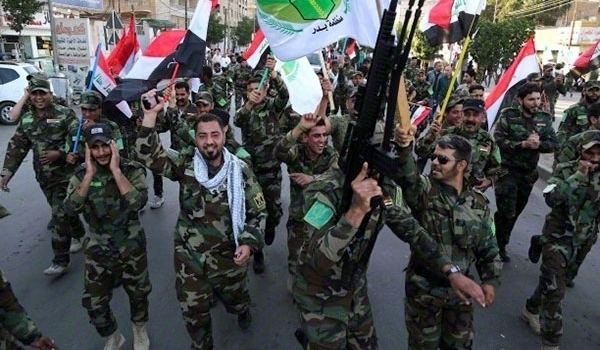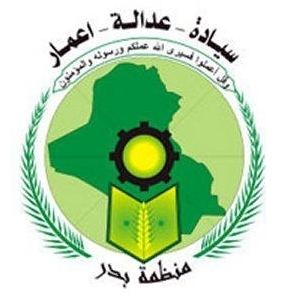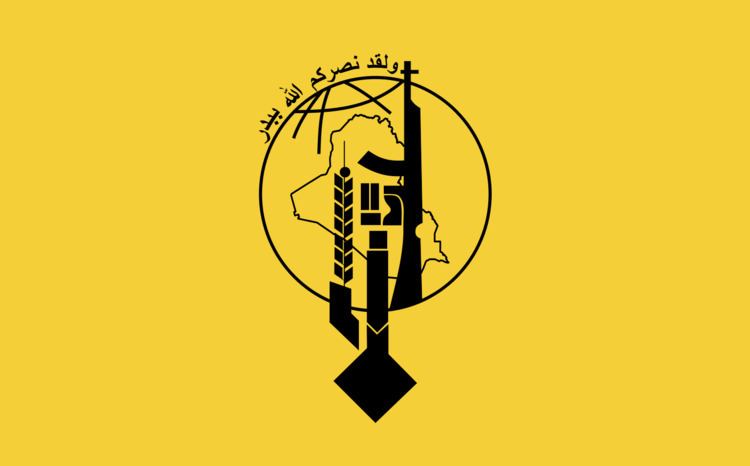Ideology Shia Islamism Seats in the Council of Representatives of Iraq: 22 / 325 Founded 1982 | Religion Shi'a Islam Leader Hadi Al-Amiri | |
 | ||
Founder Ayatollah Sayyed Mohammed Baqir al-Hakim | ||
Exclusive interview of hadi al ameri leader of the iraqi shia badr organization
The Badr Organization (Arabic: منظمة بدر Munaẓẓama Badr), previously known as the Badr Brigades or Badr Corps, is an Iraqi political party headed by Hadi Al-Amiri. The Badr Brigade was the Iran-officered military wing of the Iran-based Shia Islamic party, Supreme Council for Islamic Revolution in Iraq (SCIRI), formed in 1982. Since the 2003 invasion of Iraq most of Badr's fighters have entered the new Iraqi army and police force. Politically, Badr Brigade and SCIRI were considered to be one party since 2003, but have now unofficially separated with the Badr Organization now an official Iraqi political party. Badr Brigade forces, and their Iranian commanders, have come to prominence in 2014 fighting the Islamic State of Iraq and the Levant (ISIL) in Iraq. It is a part of the Popular Mobilization Forces.
Contents
- Exclusive interview of hadi al ameri leader of the iraqi shia badr organization
- SCIRI
- Post invasion Iraq
- Military action against ISIL
- Structure
- References

SCIRI

The organization was formed in Iran in 1982 as the military wing of the Supreme Council for Islamic Revolution in Iraq. It was based in Iran for two decades during the rule of Saddam Hussein and led by Iranian officers. It consisted of several thousand Iraqi exiles, refugees, and defectors who fought alongside Iranian troops in the Iran–Iraq War. The group was armed and directed by Iran.

They briefly returned to Iraq in 1991 during the 1991 Iraqi uprising to fight against Saddam Hussein, focusing on the Shia holy cities of Najaf and Karbala. They retreated back into Iran after the uprising was crushed.
In 1995, during the Kurdish Civil War, Iran deployed 5,000 Badr fighters to Iraqi Kurdistan.
Post-invasion Iraq

Returning to Iraq following the 2003 coalition invasion, the group changed its name from brigade to organization in response to the attempted voluntary disarming of Iraqi militias by the Coalition Provisional Authority. It is however widely believed the organization is still active as a militia within the security forces and it has been accused of running a secret prison and sectarian killings during the Iraqi Civil War.
Because of their opposition to Saddam Hussein, the Badr Brigade was seen as a U.S. asset in the fight against Baathist partisans. After the fall of Baghdad, Badr forces reportedly joined the newly reconstituted army, police and Interior Ministry in significant numbers. The Interior Ministry was controlled by SCIRI and many Badr members became part of the Interior Ministry run Wolf Brigade. The Iraqi Interior Minister, Bayan Jabr, was a former leader of Badr Brigade militia.
In 2006 the United Nations human rights chief in Iraq, John Pace, said that hundreds of Iraqis were being tortured to death or executed by the Interior Ministry under SCIRI's control. According to a 2006 report by the Independent newspaper:
'Mr Pace said the Ministry of the Interior was "acting as a rogue element within the government". It is controlled by the main Shia party, the Supreme Council for Islamic Revolution in Iraq (Sciri); the Interior Minister, Baqir Jabr al-Zubeidi, is a former leader of Sciri's Badr Brigade militia, which is one of the main groups accused of carrying out sectarian killings. Another is the Mehdi Army of the young cleric Moqtada al-Sadr, who is part of the Shia coalition seeking to form a government after winning the mid-December election. Many of the 110,000 policemen and police commandos under the ministry's control are suspected of being former members of the Badr Brigade. Not only counter-insurgency units such as the Wolf Brigade, the Scorpions and the Tigers, but the commandos and even the highway patrol police have been accused of acting as death squads.
The paramilitary commandos, dressed in garish camouflage uniforms and driving around in pick-up trucks, are dreaded in Sunni neighbourhoods. People whom they have openly arrested have frequently been found dead several days later, with their bodies bearing obvious marks of torture.'
Military action against ISIL
Following ISIL's successful Anbar campaign and June 2014 offensive, the Badr Organization mobilized and won a series of battles against ISIL, including the Liberation of Jurf Al Sakhar and lift the Lifting of the Siege of Amirli. In early February 2015 the group, operating from its base at Camp Ashraf, fought in Diyala Governorate against ISIL. Over 100 militia were killed in the fighting including 25 in Al Mansouryah. Badr's leader, Hadi Al-Amiri, said his militiamen were committed to the safety of Sunnis, but deep mutual suspicions remained in the light of recent sectarian killings and suspicion that some Sunni tribes were allied with IS.
Structure
The Badr Corps consists of infantry, armor, artillery, anti-aircraft, and commando units with an estimated strength of between 10,000 and 50,000 men (according to the Badr Organization).
